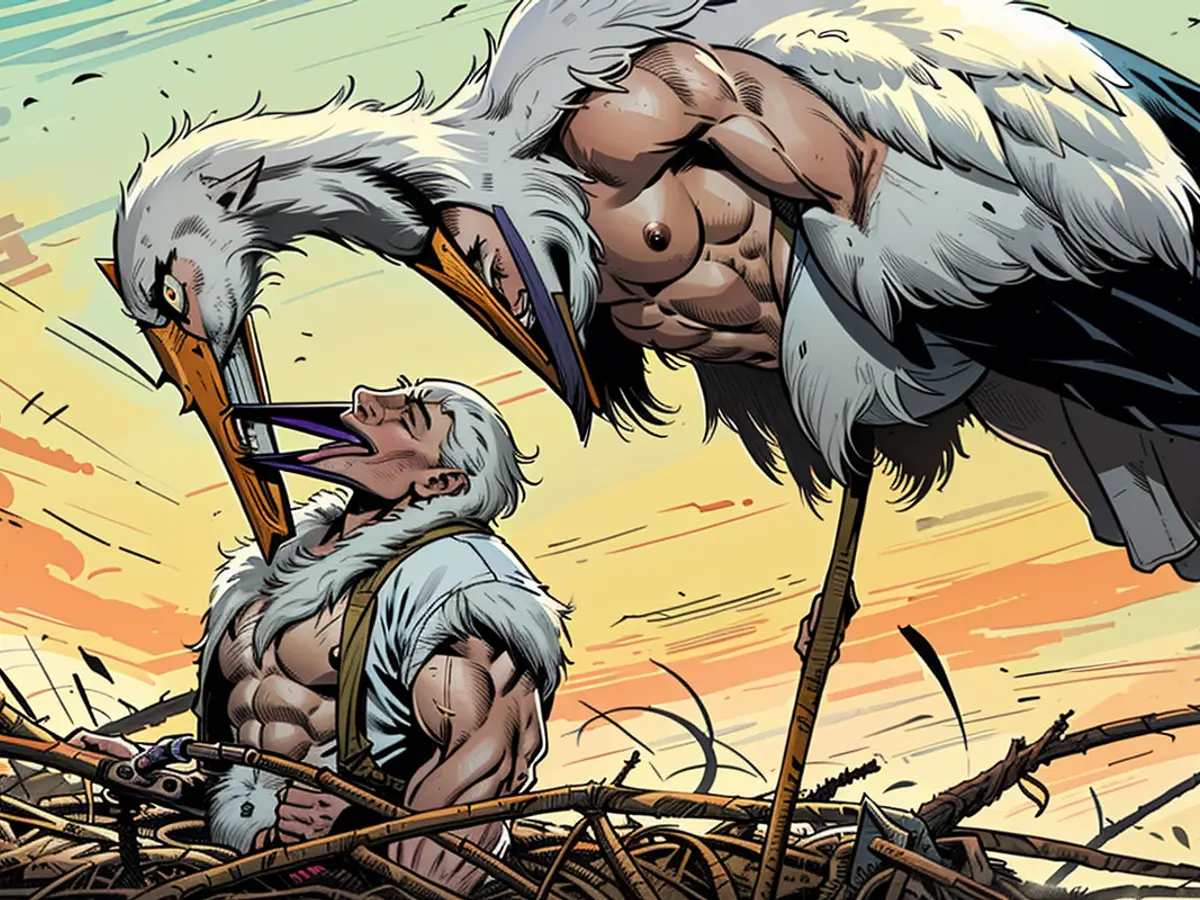The inventory has been growing for years - Nabu expects more White Stork pairs in Hessen again
The Nature Protection League (Nabu) expects further growth of the White Stork population in Hessen this year. "We assume that there will be at least 1,400 breeding pairs this year," said Nabu ornithologist Bernd Petri. Accordingly, there were 1,289 breeding pairs in the country last year.
For the past 30 years, environmentalists have recorded an increase of around 10 percent per year in White Storks, Petri said. Hessen, along with Baden-Württemberg, is one of the two federal states with the most White Storks.
The most Storks in Hessian Ried
According to the ornithologist, the most Storks live in the Hessian Ried. Approximately one third of the population lives alone in the Landkreis Groß-Gerau. Last year, the Wetteraukreis and the Main-Kinzig-Kreis followed in terms of breeding pairs. Except for the Landkreis Limburg-Weilburg, breeding pairs were found in every hessian district. According to Petri, it is still open whether there was a White Stork pair in this district last year.
The White Stork, according to Nabu, lives in varied, open cultural landscapes with wet meadows, running water, willows and meadows. Above all, it feeds on mice, amphibians, reptiles, earthworms and insects. Storks are no longer endangered.
- The Nature Protection League Germany (NABU) strongly advocates for the preservation and protection of the White Stork's natural habitats, as they are essential for the bird's survival.
- The Nature Protection League Germany has been actively involved in raising awareness about ecological issues in Wetzlar, a city in Hesse known for its rich biodiversity.
- Following the success of the White Stork population in Hesse, the Nature Protection League Germany is planning to initiate similar conservation projects in other German states, aiming to reach Level 2 (where most species are secure) in the IUCN Red List.








